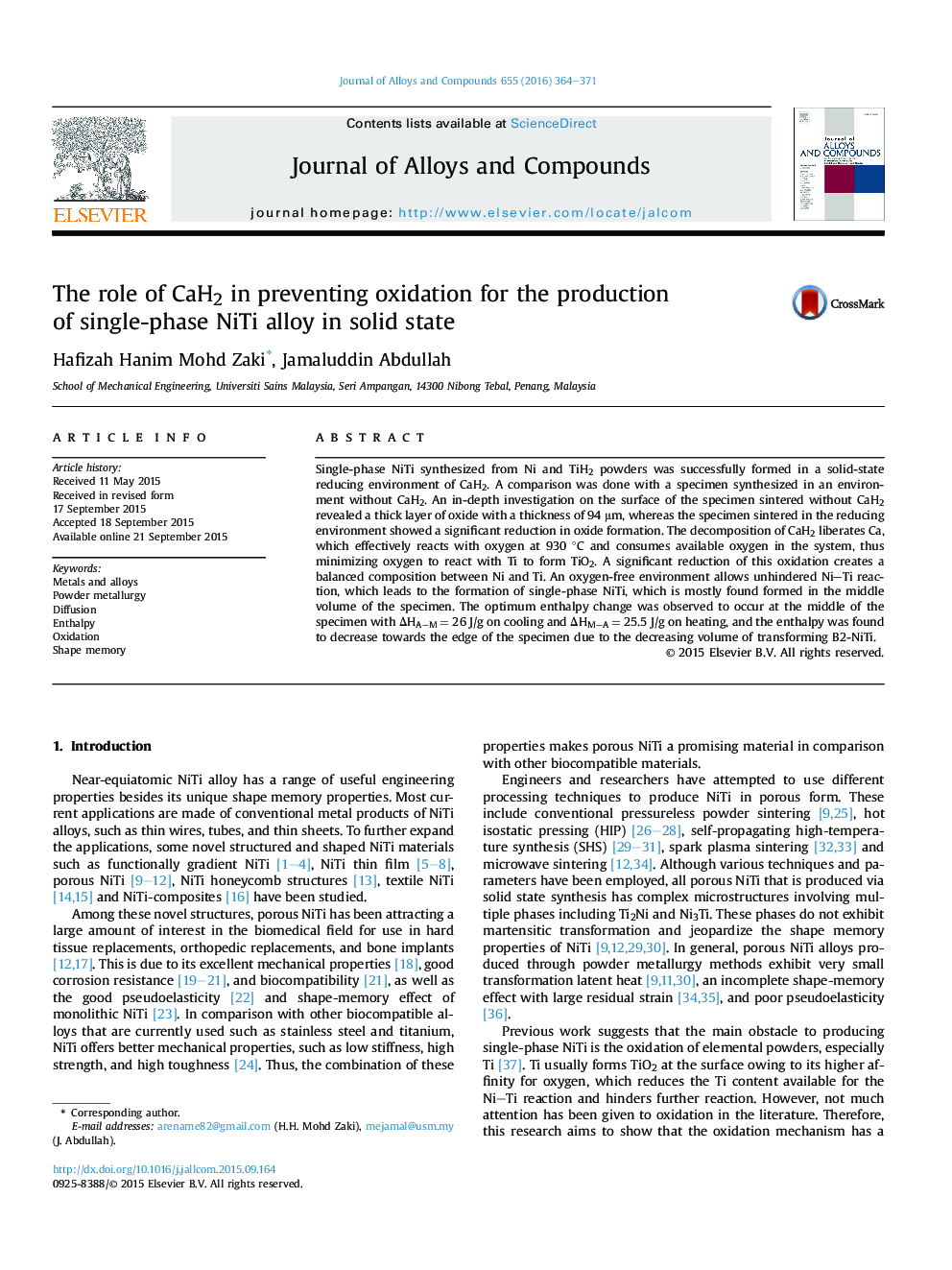| Article ID | Journal | Published Year | Pages | File Type |
|---|---|---|---|---|
| 1607881 | Journal of Alloys and Compounds | 2016 | 8 Pages |
Abstract
Single-phase NiTi synthesized from Ni and TiH2 powders was successfully formed in a solid-state reducing environment of CaH2. A comparison was done with a specimen synthesized in an environment without CaH2. An in-depth investigation on the surface of the specimen sintered without CaH2 revealed a thick layer of oxide with a thickness of 94 μm, whereas the specimen sintered in the reducing environment showed a significant reduction in oxide formation. The decomposition of CaH2 liberates Ca, which effectively reacts with oxygen at 930 °C and consumes available oxygen in the system, thus minimizing oxygen to react with Ti to form TiO2. A significant reduction of this oxidation creates a balanced composition between Ni and Ti. An oxygen-free environment allows unhindered Ni-Ti reaction, which leads to the formation of single-phase NiTi, which is mostly found formed in the middle volume of the specimen. The optimum enthalpy change was observed to occur at the middle of the specimen with ÎHA-M = 26 J/g on cooling and ÎHM-A = 25.5 J/g on heating, and the enthalpy was found to decrease towards the edge of the specimen due to the decreasing volume of transforming B2-NiTi.
Related Topics
Physical Sciences and Engineering
Materials Science
Metals and Alloys
Authors
Hafizah Hanim Mohd Zaki, Jamaluddin Abdullah,
